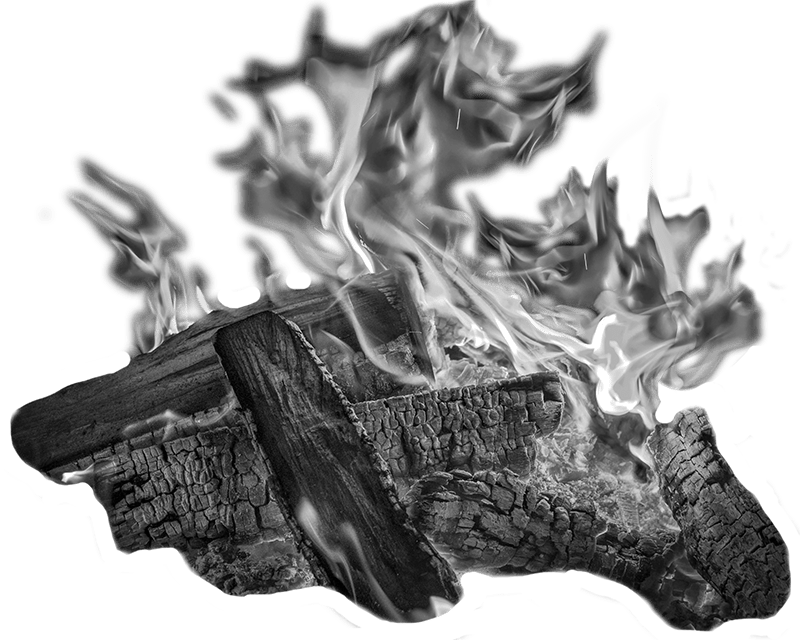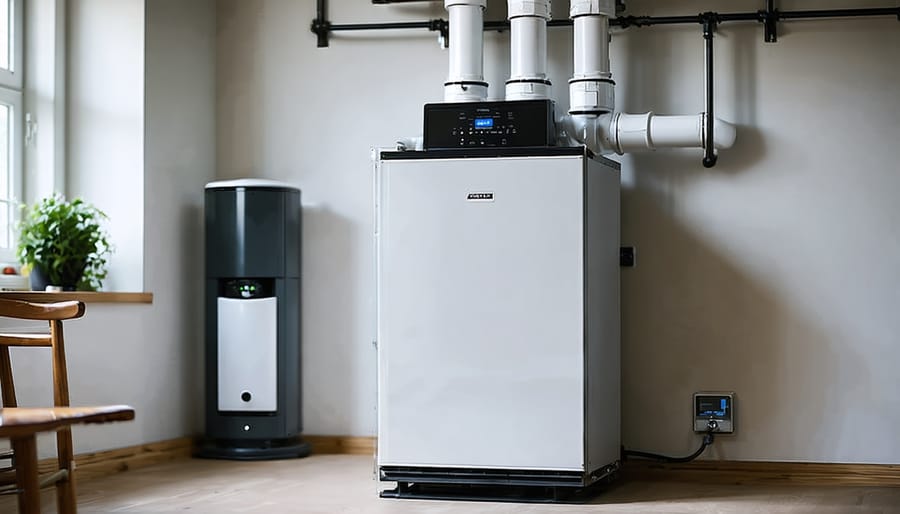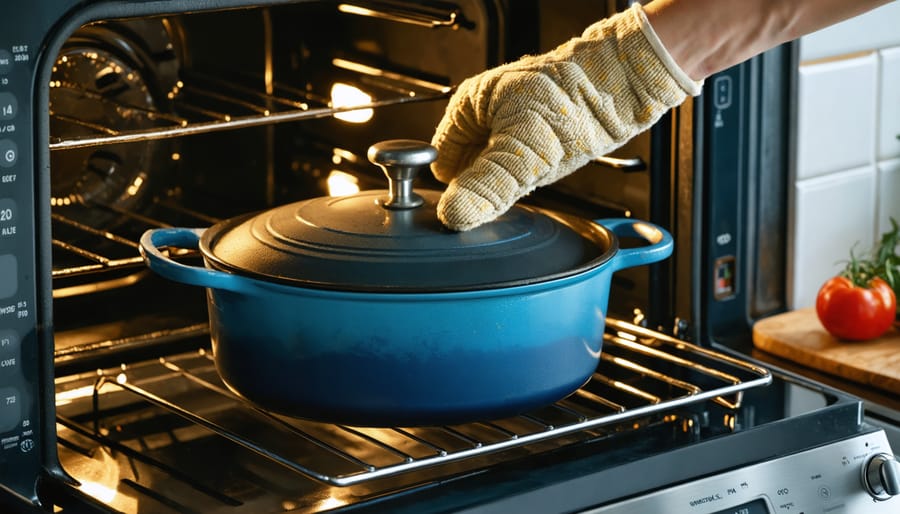That inconspicuous knob or lever near your fireplace isn’t just decorative—it’s your flue damper control, and mastering it can slash your heating bills while keeping your home safe from dangerous carbon monoxide buildup.
**Locate your damper control** by checking inside the firebox just above the opening, or look for a handle mounted on your chimney exterior or sidewall. Rotate the knob clockwise or push the lever forward to open the flue completely before lighting any fire—you should feel a distinct change in airflow and hear the metal plate move.
**Test the damper position** by holding a lit match or flashlight up the chimney; if smoke or light disappears upward, it’s open. When your fireplace is completely cold and unused, turn the knob counterclockwise or pull the lever back to close it fully, preventing heated indoor air from escaping up your chimney like an open window.
**Adjust the damper gradually** during active fires to balance draft and heat retention—too open wastes energy, too closed forces smoke into your room. This simple control transforms your fireplace from an energy-draining liability into an efficient, eco-friendly heating solution that enhances your home’s comfort and ambiance while protecting your family’s safety and your wallet.
What Is a Fireplace Flue Knob?

How the Flue Knob Controls Your Damper
The flue knob operates through a surprisingly straightforward mechanical system that gives you direct control over your fireplace’s airflow. When you turn or pull the knob, it connects to a metal rod or cable that runs up your chimney to the damper plate—a hinged metal door positioned just above your firebox.
Think of it like opening and closing a window. As you rotate the knob clockwise (or pull it outward, depending on your model), it physically moves the damper plate from a closed horizontal position to an open vertical one. This creates a clear pathway for smoke and gases to escape up your chimney. Turning it counterclockwise (or pushing it in) reverses the action, closing off that passage when your fireplace isn’t in use.
Understanding the relationship between your damper and flue helps you appreciate why proper operation matters. The knob typically offers resistance as you turn it—that tension means it’s working correctly, moving the damper through its full range of motion. Some knobs feature multiple positions, allowing you to fine-tune airflow for optimal draft control and efficiency, which contributes to cleaner burning and reduces heat loss when you’re not enjoying a fire.
Different Types of Flue Controls
Not all fireplace flue controls look alike, and knowing which type you have makes operation much simpler. The most common style is the **rotary knob**, typically mounted on the fireplace front or side. You’ll turn it clockwise or counterclockwise to open or close the damper—think of it like a dial that controls airflow above your firebox.
**Lever-style controls** are another popular option, featuring a handle that you push or pull to adjust the flue position. These often provide a more tactile feel, making it easier to gauge whether your damper is fully open or closed. You’ll usually find these mounted inside the firebox or on the fireplace face.
Finally, **chain pulls** represent a more traditional approach. A metal chain hangs down inside your fireplace opening, and you simply pull it to open the damper, then secure it with a hook or slot mechanism. While these might seem old-fashioned, they’re reliable and straightforward.
Take a moment to identify your control type—this knowledge ensures you’re operating your flue correctly, maximizing both warmth and energy efficiency while keeping your home safe. Each style works effectively when used properly, so there’s no “better” option, just different mechanisms for the same important job.
Why Proper Flue Knob Operation Matters
The Hidden Cost of Leaving Your Flue Open
Leaving your flue open when you’re not enjoying a crackling fire is like leaving a window wide open all winter long—except this window leads straight up through your roof. Here’s what’s really happening to your wallet: that expensive heated air you’re paying to warm your home is silently rushing up and out through your chimney, while cold air gets pulled in to replace it.
Think about it this way: a typical open flue can waste hundreds of dollars in heating costs each season. That’s because your furnace or heating system works overtime to compensate for this constant air loss, running longer cycles and consuming more energy. In a single day, an open flue can release as much heated air as leaving your front door ajar for hours.
Beyond the immediate energy waste, you might also notice drafts and cold spots near your fireplace, making your living space uncomfortable. Some homeowners even experience wind coming down your chimney, creating additional comfort issues. The simple act of remembering to close your flue knob after each fire can keep your home cozier while significantly reducing your carbon footprint and monthly bills—a win for both your comfort and the environment.
Safety Risks of Incorrect Flue Position
Understanding the critical importance of proper flue position isn’t just about efficient heating—it’s literally a matter of life and death. When you operate your fireplace with the flue closed or partially closed, you’re creating a dangerous situation that can have serious consequences for your household.
The most significant risk is carbon monoxide poisoning. This odorless, colorless gas is produced whenever you burn wood or gas, and your flue system is designed to safely vent it outside. When the flue knob isn’t properly positioned to open the damper, carbon monoxide accumulates inside your home instead of escaping up the chimney. Early symptoms include headaches, dizziness, and nausea—but prolonged exposure can be fatal.
Beyond carbon monoxide dangers, an incorrectly positioned flue causes immediate smoke backup into your living space. You’ll notice thick smoke billowing into the room rather than drawing up the chimney, creating an uncomfortable and unhealthy environment. This smoke contains harmful particulates and toxins that irritate your respiratory system and damage your indoor air quality.
Before lighting any fire, always verify your flue knob is in the fully open position. It’s a simple check that protects your family’s safety and ensures your fireplace functions as the cozy, eco-friendly heating solution it’s meant to be.
How to Use Your Fireplace Flue Knob Correctly
Before Starting a Fire
Before you strike that first match, take a moment to ensure your fireplace is ready for a safe, efficient burn. Start by locating your flue knob—typically found on the fireplace face or nearby wall. Turn it counterclockwise or pull it outward to fully open the flue. You should feel little to no resistance when it’s completely open. Not sure about the process? Check our detailed guide on how to open your flue for step-by-step instructions.
Once opened, perform a quick draft test by holding a lit match or tissue near the fireplace opening. The flame or paper should be drawn upward, indicating proper airflow. If smoke drifts into your room instead of up the chimney, your flue isn’t fully open or there’s a blockage. Never light a fire without confirming proper ventilation—it’s essential for your family’s safety and helps reduce indoor air pollution while maximizing your fireplace’s eco-friendly heating potential.
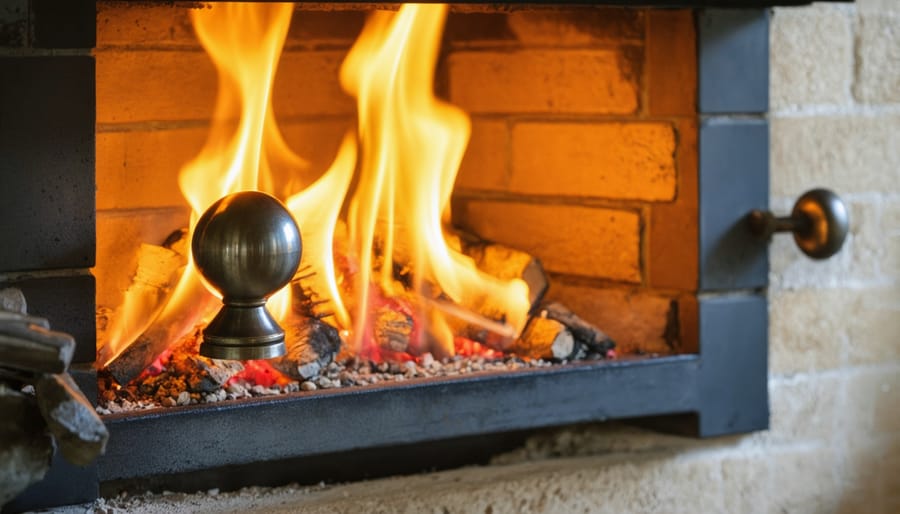
During a Fire
Once your fire is burning well, you’ll want to adjust the flue knob for optimal performance. Start with the flue fully open when lighting the fire, then gradually close it once the flames are established—but never close it completely while the fire burns. The goal is finding that sweet spot where smoke draws up efficiently without losing too much heat up the chimney.
Watch the flames as you adjust. Strong, steady flames with minimal smoke indicate good draft. If smoke starts entering your room, open the flue wider immediately. A properly adjusted flue maximizes your fire’s warmth while maintaining safety and reducing energy waste—a win for both your comfort and the environment.
Keep the flue knob accessible throughout the burn. You may need to readjust as the fire intensity changes or outdoor conditions shift. As your fire dies down to glowing embers, you can close the flue slightly more, but remember: never seal it completely until all embers are cold.
After the Fire is Out
Once the flames have died down and you’re ready to call it a night, resist the urge to immediately close that flue knob. This is one of the most common mistakes homeowners make, and it’s an important safety consideration.
Here’s the golden rule: wait until the fire is completely out and the ashes have cooled significantly. This typically takes 3-4 hours, though larger fires may need even longer. If you’re unsure, it’s better to wait overnight before closing the flue. Closing it too soon traps dangerous carbon monoxide and other gases inside your home—gases you definitely don’t want circulating through your living space.
Before turning the knob to the closed position, hold your hand near the fireplace opening (not too close!) to check for any remaining heat. You can also look up the chimney with a flashlight to ensure no embers are still glowing.
When you’re confident everything has cooled down, gently rotate the flue knob to the closed position. You’ll feel it stop when it’s fully shut. Keeping your flue closed when not in use is an eco-friendly practice that prevents heated or cooled air from escaping up the chimney, helping you save on energy costs year-round.
Troubleshooting Common Flue Knob Problems
When Your Flue Knob Won’t Turn
A stubborn flue knob that refuses to budge can be frustrating, but it’s a common issue with straightforward solutions. The most frequent culprit? Built-up creosote, rust, or simple disuse causing the mechanism to seize.
Before attempting any fixes, ensure your fireplace is completely cold—safety first! Start with the gentlest approach: spray a penetrating lubricant like WD-40 around the knob’s base and let it sit for 15-20 minutes. Try turning again using steady, even pressure—avoid forcing it, which could break the mechanism.
If lubrication doesn’t work, the damper plate itself might be stuck. Shine a flashlight up your chimney to check for debris or severe rust. Sometimes a gentle tap with a rubber mallet on the knob (not hard enough to damage it) can help break loose minor corrosion.
For persistent issues, consider this an opportunity to schedule a professional chimney inspection. A stuck flue often signals that it’s time for a thorough cleaning anyway—removing creosote buildup not only frees your knob but also improves your fireplace’s efficiency and safety. Regular maintenance keeps your cozy fire burning safely while supporting eco-friendly home heating.
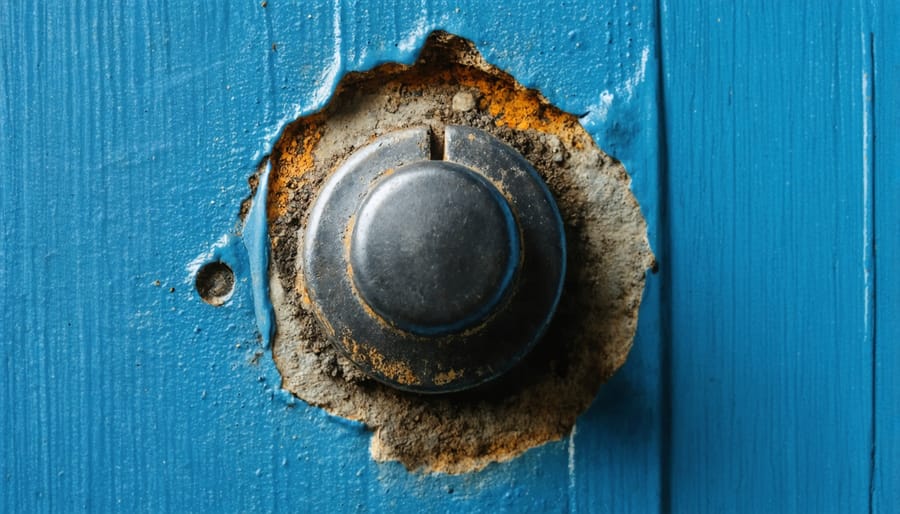
How to Tell If Your Flue Is Actually Open
Sometimes the knob position can be misleading, especially if it’s been loose or turned multiple times over the years. Here are three reliable ways to confirm your flue is actually open before lighting that cozy fire.
The flashlight test is your best friend. Simply shine a bright light up into your fireplace and look up the chimney. If you see daylight or the inside of your chimney, you’re good to go. If all you see is a metal plate blocking your view, the damper is closed.
Try the hand test for a quick check. Hold your hand up into the firebox near the damper area. If you feel a cold draft coming down, your flue is open and doing its job of connecting your home to the outdoors.
The smoke test offers another confirmation method. Light a small piece of newspaper and hold it in the firebox. Watch where the smoke travels—if it rises up the chimney, you’re all set. If it billows back into your room, the damper is still closed. This simple test can save you from a smoke-filled living room and protect your home’s air quality.
Repairing or Replacing a Broken Flue Knob
A loose or broken flue knob is often a simple DIY fix if you’re handy with basic tools. Check if the knob has simply detached from its shaft—reattaching it with the right screw or adhesive can solve the problem quickly. However, if the damper mechanism itself is damaged or rusted, it’s time to call a professional chimney sweep or fireplace technician. They can assess whether you need a replacement knob (widely available at hardware stores) or a complete damper assembly repair. Safety should guide your decision: if you’re uncomfortable working near your chimney or can’t verify proper operation afterward, professional help ensures your fireplace remains both functional and safe for efficient, eco-friendly heating.
Eco-Friendly Flue Management Tips
Mastering your fireplace flue knob isn’t just about comfort—it’s a cornerstone of eco-friendly heating. When you close the flue immediately after your fire dies down, you’re preventing heated air from escaping up the chimney, which means your heating system doesn’t need to work overtime to maintain your home’s temperature. This simple action can reduce your energy bills by up to 30% during winter months.
Think of your flue knob as a gatekeeper for energy conservation. During the heating season, always verify the flue is completely closed when your fireplace isn’t in use. Even a partially open flue acts like leaving a window cracked open all winter—warm air continuously flows out while cold air seeps in, forcing your furnace to compensate.
For those embracing fireplace living as a sustainable lifestyle choice, consider timing your fires strategically. Burn during evening hours when you’re gathered in the living space, then close the flue before bed to trap residual warmth. This approach maximizes heat retention while minimizing fuel consumption.
Regular maintenance of your flue system also supports environmental responsibility. A well-functioning flue knob ensures complete closure, preventing unnecessary heat loss. Clean dampers seal better, and smooth-operating knobs encourage proper use rather than leaving the flue perpetually open out of frustration.
By treating your flue knob as an essential tool for energy management rather than an afterthought, you’re actively reducing your carbon footprint while enjoying the timeless ambiance only a real fireplace can provide.
That little knob on your fireplace might seem insignificant, but as we’ve explored, it’s actually one of the most important controls in your home. Taking just a few moments to understand and properly operate your flue knob can make the difference between a cozy, efficient fire and wasted energy—or worse, a safety hazard.
Think of it as your fireplace’s master switch: open before lighting, closed when the fire’s out. This simple routine protects your family from harmful smoke and carbon monoxide while keeping your hard-earned warmth exactly where it belongs—inside your home. By preventing heated air from escaping up the chimney when your fireplace isn’t in use, you’re also embracing a more eco-friendly approach to home heating that benefits both your wallet and the environment.
Why not take a minute right now to locate your flue knob and give it a quick check? Make sure it moves smoothly and you understand its positions. This small investment of time ensures countless evenings of safe, efficient fires ahead. Mastering this humble control transforms your fireplace from just another appliance into a truly reliable source of warmth and ambiance for your home.
